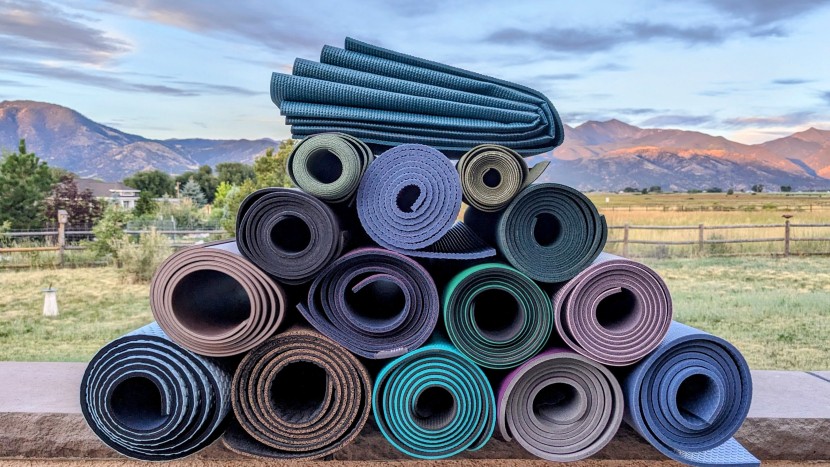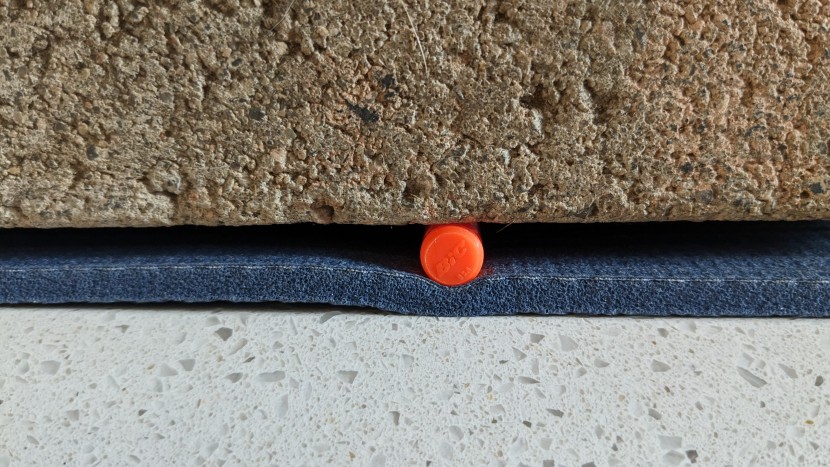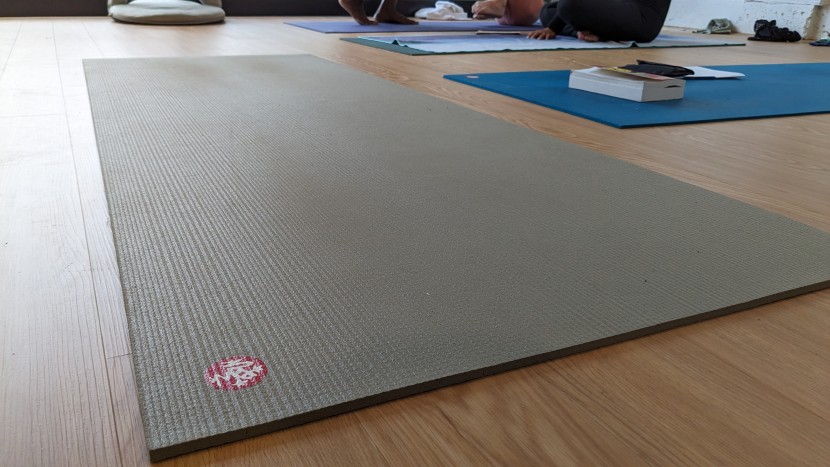To find the best yoga mat, we first carefully researched and selected the most popular and highest-rated ones available on the market. We lined them up next to each other for our side-by-side comparison testing, comparing comfort levels, stability, and wet and dry grip. We carefully tested each mat for many practices in varied styles of yoga to see how they performed and held up to rigorous practice. We took them to yoga teacher workshops, consulting over 15 certified yoga teachers and many more long-time practitioners on their experience in the field. Our testers included yoga teachers and experienced practitioners of different styles of yoga. Here's how we specifically tested our performance metrics.
Comfort and Stability
We prioritized comfort as we tested each mat through vigorous yoga sessions in the field because a relaxed body supports a calm, clear mind during practice and health over time. So, our first question was, “Does the yoga mat provide adequate cushion for the joints?” To test this, we first performed the footprint test. If you can stand on a mat and see foot imprints like you would on beach sand, then the mat is too compressible, and your bony bits are essentially hitting the floor.
Our second test was a simulation of bone compressing downward into the mat. To do this, we stacked a pen underneath a 40-pound cinderblock. With some mats, especially those made of PVC, the pen was pressed into the floor — imagine that was your elbow or knee bone compacting into tile or hardwood. With other materials like TPE and rubber, the pen (your bones) didn't compress the material as much, telling us it can provide more protection between you and the floor. Another disadvantage of too soft or too airy cushioning is that you sink into it and may start to wobble in poses like the standing splits. So our next question was, “How does the yoga mat balance comfort with stability in balances?” We tested each mat through a set series of standing single-leg balances and arm balances to see which mats were grounding and which felt like sinkholes that threw off our center.
Grip
During our side-by-side testing, we judged the following aspects of grip: dry hand traction, sweaty wet grip, and the grip on the floor of each mat. To first get an idea of dry traction, we drug a yoga block across each mat and measured the surface friction with a tubular spring scale. We then spent hours performing a series of poses on each mat, observing how the different mats performed in dry traction. We did a series of Sun Salutations on each one to note if our hands started slipping in Ardo Mukha (downward facing dog) or if our feet slid apart during Virabhadrasana (Warrior I or II).
We tested wet grip by first sprinkling the mats with water and observing if the water was absorbed or pooled on the mat before testing our grip in a series of poses. Next, we drenched each mat with
a liter of water (to simulate the average amount of sweat in a hot yoga class) and tried to hold downward dog, lunges, and dynamic transitions. Testing was a fun slip and slide and we noted any slide-out hazards so you wouldn't have to take the fall.
Finally, we wanted to find mats that grip the ground and won't shift under your feet. To do this, we first roll over our toes into down dog, as this high traction transition between the hands and feet puts opposing forces on the surface — flimsy mats will buckle or wrinkle in the middle. Finally, we wanted to find mats that lay flat and didn't budge with movement. We measured how much mats naturally curl above the ground, and then we forcefully shuffled on top of the mats, weeding out the shimmies and wrinklies from the steadfast foundations.
Materials
We wanted to see how durable these mats are over time. We consulted over fifteen yoga teachers and many more practitioners to get insights from yogis who have used different models for vigorous practices over the years. We then tested each mat for two months and observed any initial signs of wear or quality concerns like ink bleeding, wrinkles, or flaking of material. We stretched and sweated on these mats for over 100 testing hours. After our testing period, we collected all the mats together and noted any damage and wear and tear. We also compared older versions of each model to see how they held up to longer-term use. Another consideration was the sustainability of each mat. We spent hours researching the different materials of the mats and how they are marketed, trying to wade through some of the hype to figure out which models are really the “environmentally friendly” ones.
Ease of Use
After hours of sweaty yoga tests, we had to clean these mats. We researched each mat's recommended cleaning, cared for them, and noted which were high maintenance and which were easy to care for. We tested each mat in homes with dogs and cats, noting which models attracted animal hair and dirt and how gunk stuck or slid from the surface. We weren't easy on these mats, using each one outside for yoga sessions in the park or at the beach. Mats that simply needed wipe-downs scored higher. Mats that were dirt magnets, stained easily, or needed frequent deep cleans because they absorbed body fluids ranked lower. We also took into account portability for this metric. We weighed each model and then tested them “on the scale of our backs” by assessing how they felt when toting them to and from the studio or on a hike.





